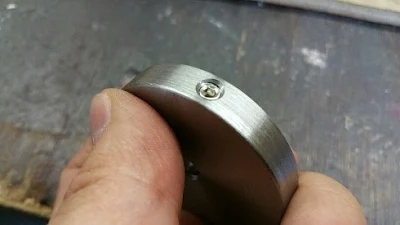Podcasting since 2005! Listen to Latest SolderSmoke
Saturday, July 16, 2016
Preserving Vanguard 1
Ira Flatow of "Science Friday" was recently talking about how best to preserve important bits of the history of mankind's exploration of space. Our old friend Vanguard 1 was mentioned several times. It is now the oldest satellite still in space.
You can listen to the Science Friday show here:
http://www.sciencefriday.com/segments/protecting-the-historic-human-record-in-space/
They also have a transcript of the show on the same page.
SolderSmoke fans will remember the Vanguard adventures of Mike Rainey AA1TJ:
http://soldersmoke.blogspot.com/search?q=Vanguard
This seems to be the month for Vanguard: just a couple of weeks ago, on 40 meters I spoke to Dale Parfitt W4OP. Dale was one of the first people to pick up Mike Rainey's Vanguard replica signals (see link above).
AND...
The Vanguard reproduction project came up during Eric Guth 4Z1UG's "QSO Today" interview with Graham Firth G3MFJ of the G-QRP Club:
http://www.qsotoday.com/podcasts/g3mfj
(Graham has such a great voice. He definitely SHOULD build a phone rig!)
VIVA VANGUARD!
Labels:
Clubs,
Israel,
Parfitt-- Dale,
Rainey -- Michael,
satellites,
space program,
UK
Monday, July 11, 2016
A Light for the Poor
I thought this was really clever, the kind of innovation that can make a big difference in the lives of poor people.
Labels:
Solar power
Sunday, July 10, 2016
Update: PA3GSV's Amazing Mighty Midget Receiver (video)
Jan sent me an amazing update on his Mate for the Mighty Midget Mk 2 receiver project. I'm really blown away by the skill that he brings to the mechanical phase of this project. This is a homebrew dial-string reduction drive using the end cap from a sewer pipe as the big wheel. Think about that. Amazing. Jan reports that with the mechanical work almost done, he is almost ready to start melting solder. FB Jan! Check out the video above and the photos below.
Labels:
Mate for the Mighty Midget,
McCoy -- Lew,
Netherlands,
video
Saturday, July 9, 2016
HRO (not HOR!) -- The King of Reduction Drives
At the recent Manassas Virginia hamfest Armand WA1UQO and I came across an old HRO receiver. Armand mentioned in passing that he had an HRO dial and drive for me if I wanted one. When Pete heard this he said I definitely NEEDED one. Armand heard Pete's comment and very kindly put an HRO dial and reduction drive in the mail for me.
Wow, it is a magnificent thing! After years of struggling with small Jackson Brother reduction drives and with reduction drives brutally cannibalized out of innocent Heathkit Q multipliers, I now realize that I have been playing in the minor leagues. This, my friends, is the reduction drive that helped win WWII! I will have to build something worthy of its inclusion.
The designation HRO has a wonderful story behind it:
This is from: http://www.cryptomuseum.com/df/hro/
The new radio was also designed by James Millen at the National Radio Company, but this time with two RF amplifiers and two IF amplifiers at 455 kHz with a 20Hz crystal filter. He kept the pluggable coil packs as part of the design and added the now famous epicyclic dial, which allows the operator to tune the frequency scale in 1/500th units (with the aid of a calibration chart).
The design was finished in 1934 and National pushed hard to get the receiver out by the end of that year. When creating the tools for the first production run, the tool makers had to work overtime and used HOR (Hell Of a Rush) as a job number on their overtime slips. As National's marketing department didn't want their radios to become known as HORs (whores), the name was changed to HRO (Hell of a Rush Order). Despite the best engneering efforts, technical problems delayed the release of the the radio until March 1935. The price at the introduction was US$ 233.
Another site provides tech details and history on the drive itself:
https://www.prismnet.com/~nielw/PW_NPW_Dial/hro_dial.htm
The HRO dial introduced by the National Radio Company in late 1934 was the hallmark of top-of-the-line National receivers from the mid 30s through the 60s. By late 1936 the "HRO dial" was appearing on the NC-100 series of receivers and even the 1-10, National's VHF receiver. Throughout WWII many of the NC-100 variants that National provided to the military used this same dial. By 1950 National had added built-in direct frequency readout to the HRO-50 but still kept the same 0-500 reading dial. Through the mid-50s and into the 60s National mimiced the HRO dial look on their mid-priced receivers such as the NC300, 303 and 270. Even the solid state HRO-500 introduced in the early 60s used a version of this dial. When combined with the required 20 to 1 venier gear drive, the HRO dial provided an effective scale length of 12 feet and was direct reading to 1 part in 500. Ten turns of the dial drives the tuning capacitor stop to stop. Published HRO calibration curves showed each ham band spread over eight turns (or 400 divisions). In addition, dial divisions were about 1/4 inch apart. On all bands below 10 meters the HRO dial is easily resettable to within a KC (or KHz).
Friday, July 8, 2016
Occam's Bench: M0XPD on the Minimalist Measurement Mindset
Our ace correspondent in Dayton, Bob Crane W8SX, caught up with Paul Darlington M0XPD (above, the guy with the rifle) and interviewed him about his presentation at Four Days in May 2016. You can listen to the interview here by clicking on the link below. I especially liked the comments on the joys of fixing things and the advantages of SIMPLE analog circuitry. Listen to the end and you will learn about Paul Darlington's connection to the famous Darlington Pair.
http://soldersmoke.com/M0XPDFDIM.mp3
Paul provided more info (including his slide show and presentation notes) on his BRILLIANT Dayton talk here:
https://sites.google.com/site/shacknasties/presentations/fdim-2016
You can buy Paul's book here:
https://www.amazon.com/getting-there-Paul-Darlington/dp/1523452196
Thanks Paul! Thanks Bob! And thanks to George Dobbs and William of Occam!
Subscribe to:
Posts (Atom)








































